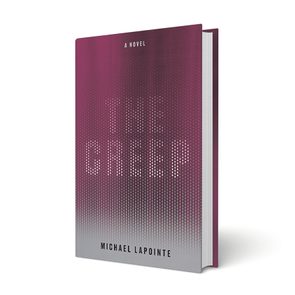Candles can entirely change the way your home feels, depending on the scent. You may light them to help relax or feel calm, or you may even choose a scent to help energize you. And while we all love a favourite candle that seemingly lasts forever, there comes a time when it just gets too low to keep burning.
If the candle was a special gift, or if it’s in a particularly pretty vessel, you may want to use the jar for other things. But what about that pesky wax that remains in the bottom? Luckily, we’ve got the perfect hack for how to get candle wax out of a jar.
How to Get Wax Out of a Candle Jar
There are a number of clever methods to get wax out of a candle jar. The easiest way is to simply pop your candle in the freezer for a few hours to allow the wax to harden. Once it’s frozen, you should be able to utilize a butter knife to pop the wax out of the bottom of the jar.
You can also use a hairdryer if you don’t have too much wax in the bottom of your jar. Place the jar on a heat-resistant surface, or hold it in your hand with an oven mitt. Turn the hairdryer on high and point it toward the wax. The wax will start to melt, making it easier to scrape out with a butter knife.
If you have quite a few vessels to clean out, consider putting them in the oven all at once. Preheat the oven to 180ºF and prepare a baking sheet with aluminum foil. Turn the candles upside down on the foil and put the baking sheet in the oven. It’ll take 10-15 minutes for the wax to melt out of the candle. Once melted, take the baking sheet out of the oven and transfer the empty jars to a cooling rack or heat-resistant surface. Once the wax dries on the aluminum foil, just bunch it up and toss it for easy clean-up. (Find out 40+ more ways to put aluminum foil to work all around the house.)
How to Reuse Your Candle Jars
So now you have a gorgeous candle jar that’s completely wax-free, what can you do with it? Once the wax has been removed from your candle jars, and you’ve cleaned them with soap and water, the uses are endless.
You can use recycled candle jars as storage containers for cotton balls, cotton swabs or hair ties or turn them into pen or pencil holders. If you want to keep them glowing, place a tealight in the bottom. Another clever use? Old candle jars make for beautiful planters!
Next, check out these clever coffee can hacks you’ll wish you knew sooner.
Why are nasal swabs used to detect COVID-19? Since the virus typically enters the body through the nose, the nasal passage is the first place its particles can be found. So, what if there could be an antibody response in the nose to stop the virus from spreading to the rest of the body? A special nasal spray may be able to do just that—and many Canadian researchers are working to develop one.
Vancouver-based research and development company SaNOtize is currently testing its nitric oxide nasal spray to prevent and treat early cases of COVID. “We call it the hand sanitizer for the nose because you use it to basically disinfect your nose,” says Gilly Regev, CEO and one of the co-founders of SaNOtize. While the SaNOtize spray is a “preventative treatment,” not a vaccine, according to Regev, researchers at various Canadian universities are working on nasal sprays that can act as COVID vaccine booster shots.
At Hamilton’s McMaster University, experts are studying the immune system to learn how an inhaled or nasal spray vaccine could stimulate a protective “spider web” mechanism in the human body that can trap and kill the virus. Researchers at uOttawa are looking at COVID’s viral spike proteins to develop a nasal spray that can trigger an immune response in the body before the virus enters. And researchers at the University of Waterloo are working on a nasal spray that’ll create a virus-like particle to generate an immune response that’ll build immunity and prevent the severity of symptoms.
To learn more about COVID-fighting nasal sprays, we reached out to Regev as well as Matthew S. Miller, an associate professor at McMaster’s Michael G. DeGroote Institute for Infectious Disease Research and the lead author on the university’s nasal spray study, and Roderick A. Slavcev, a professor at the University of Waterloo’s School of Pharmacy who specializes in vaccine design.
What’s the latest with COVID in Canada?
A year and a half into the pandemic, Canada has over 70 per cent of its population fully vaccinated and about 4,000 new cases of the virus a day—down from its peak of nearly 9,000. Recently, cases of COVID have been on the rise, there’s been debate over the necessity of COVID booster shots, and the country is facing up to four variants of the virus.
What’s SaNOtize nasal spray all about?
The SaNOtize nasal spray is “the only nasal spray that has actually gone through a proper placebo control phase two trial,” says Regev. The blinded trial used saline as the placebo and SaNOtize spray used as the treatment. “We have shown that we reduced viral load 16 times more than the control after using the spray for 24 and 72 hours,” says Regev.
The spray releases nitric oxide into the nose to prevent a potential infection and eradicate a virus—whether that be COVID, influenza, or another respiratory virus. Regev says SaNOtize can be used twice a day to prevent the virus, and up to six times a day to reduce the viral load of those who have already contracted the virus.
SaNOtize has been approved to sell in Europe, Israel, Bahrain, and Thailand, and Regev says she’s hoping it will be approved by Health Canada by the end of the year.
Why a nitric oxide spray?
Nitric oxide is a compound that the body naturally produces, says Regev. “It’s our first line of defense against infection in the body.” Nitric oxide has antimicrobial properties, so it’s able to kill bacteria, viruses and fungi.
Is nitric oxide safe to use every day?
“The dose of nitric oxide in the spray is so low,” says Regev. “We haven’t seen any significant side effects at all—not in the trials, and not in the report from the market.”
SaNOtize trials have included 200 participants and the company has sold about 100,000 units to the market. “We’re still doing testing with specific populations and children, but because we’re using compounds that are allowed in food, there shouldn’t be any issues,” says Regev. (Find out what happens if you get COVID-19 after being vaccinated.)
What about the COVID nasal spray vaccines that are being researched? What are their benefits?
Researchers are working to create vaccine nasal sprays for COVID. Although intermuscular and nasal vaccines are equally effective, the added benefit of a nasal spray is that they are administered directly into the respiratory system, so they stimulate immunity at the exact place the infection typically occurs, says Miller. Nasal spray vaccines may also generate a more immediate immune response than intramuscular injections, according to Slavcev.
Another benefit of a nasal spray is that much less of the vaccine is typically needed to stimulate the same level of protective immunity. “It’s what’s called a dose-sparing effect,” says Miller. That means one dose of an intramuscular injection can vaccinate as many as 100 people through a nasal spray.
How can a vaccine nasal spray fight COVID-19 exactly?
Nasal sprays that elicit an immune response in the respiratory tract are not new, says Miller. For example, there’s a seasonal influenza nasal spray vaccine currently available, particularly for children. (Here’s what you need to know about this year’s flu season.)
Vaccine nasal sprays work by simulating and growing the immune cells and responses in the nose to fight the infection in a localized area, says Slavcev. Stopping the virus directly at the entry can suppress it right away or help prevent symptoms from worsening.
The nasal spray vaccine Slavcev is working on at the University of Waterloo is a full vaccine, while Miller’s at McMaster is a booster.
“Boosters will likely be needed since COVID is a virus that evolves into different variants,” says Miller. “The vaccine we’ve been designing would be taken just once, and it would boost the pre-existing immunity that’s already been confirmed by the first generation vaccines that most people have received—the mRNA vaccines, the AstraZeneca vaccine or a combination of the two,” says Miller.
Are COVID nasal spray vaccines being used in other countries?
At the moment, there aren’t any approved COVID-19 vaccine nasal sprays in any country, says Miller, but there are several in development.
Will nasal sprays be effective against variants?
Miller says the nasal spray his team is currently developing appears to be effective at protecting against the virus as it evolves and creates new variants. “Delivering vaccines, by inhalation or nasal spray, do tend to stimulate immune responses in the lung that are better suited for dealing with variants,” he says. “We are designing with the idea in mind that we want to be able to protect against variants in the future and avoid the need for frequent booster shots.”
Slavcev says his vaccine nasal spray is intended to protect against variants, “although we’ll have to see how successful.”
When will COVID vaccine nasal sprays be available in Canada?
“It still has a reasonably lengthy developmental path ahead,” says Miller. “During the pandemic, there is urgency, and so we can expect an accelerated timeline, but the vaccine still needs to go through three phases of clinical trials.” Expect to wait a year or more for a nasal spray vaccine to be approved as a booster shot.
Next, an infectious disease specialist answers, “Do you need to get a COVID booster shot?”
Linden MacIntyre has established himself in the Canadian zeitgeist twice over. First he spent nearly 25 years holding corporations and politicos to account as co-host of CBC’s The Fifth Estate. Then, in his 50s, he started writing hard-hitting novels. The Bishop’s Man, his moody bestseller about corruption and pedophilia in a Nova Scotia Catholic diocese, won the Scotiabank Giller Prize in 2009.
What you can expect from Linden MacIntyre’s new novel
MacIntyre’s latest book, The Winter Wives ($35, Penguin Random House Canada), is set in Ontario, Florida, and (once again) Nova Scotia, and follows a tangled quartet of baby boomers over some 40-odd years. There’s Byron, who overcame his hardscrabble childhood in a lobster-fishing family to become a small-town lawyer in his Maritime hometown, and his best friend, the handsome, athletic Allan Chase, who grew up rich and gets even richer when he drops out of university to become a real estate magnate.
When Allan weds Peggy Winter, the beautiful, unknowable woman Byron has always loved, Byron opts for the next best thing and marries her quiet, reliable, long-suffering sister, Annie. One day, when the couples are in their 60s, Allan suffers a stroke during a round of golf. While Allan lies in a hospital bed, the cops start poking around—and Byron discovers that he didn’t know his friend as well as he thought he did. Soon he finds himself chasing a trail of deception, double lives and missing millions. At the same time, Byron realizes he’s losing chunks of his own memory and must contend with the legacy of dementia in his family.
Why you’ll love The Winter Wives
From the start, the novel reads like a modern-day Canadian twist on The Great Gatsby. Allan is the gold-dusted-yet-secretive hero against whom Byron measures his masculinity, while Peggy is the dreamy cipher on whom he projects his desires.
Byron seems detached from his life, desperately aloof, trapped under the paralyzing weight of his inferiority complex. Even his name reflects his insecurity—his real name is Angus, but a childhood accident left him with a limp, so Peggy started calling him Byron as a nod to the Romantic poet, who had a club foot.
It’s only as Byron begins to reckon with his memories—and the prospect of losing them—that he begins to discover who he is and how he’s been shaped by buried traumas. MacIntyre specializes in literary mysteries, and The Winter Wives threads that needle perfectly: the mystery part is Byron’s quest to uncover Allan’s secrets, and the literary part is his desperate need to unravel his own.
Looking for more great reads? Here’s the inside scoop on Louise Penny’s latest book.

From intricately carved jack-o’-lanterns to spiderwebs draped from trees, some neighbourhoods really go all-out on Halloween decorations. The latest trend in spooky outdoor accents, however, takes do-it-yourself Halloween decor to the next level: chicken wire ghosts. And the haunting figures are so realistic, you’ll have trick-or-treaters running amok!
Each ghost is formed with a frightening amount of chicken wire. The reason people seem to adore them so much really comes down to how realistic they are. The chicken wire holds any shape it’s folded into, so you can make any character to haunt your front yard. And Halloween is the perfect time to showcase all the arts and crafts skills you’ve developed over the last year!
How to Make a Chicken Wire Ghost
Fortunately, these ghosties really aren’t that hard to make. First, you’ll need to pick up several rolls of chicken wire from your local hardware or home store, depending on how many figures you intend to make.
Now, you’re probably wondering, “How do you sculpt a chicken wire ghost?”
And the answer to that is…mannequins! For people who sew or happen to have a mannequin or dressmaker’s form around, this is the perfect Halloween DIY for you. Wrap the chicken wire around the form, bending the wire to the desired shape, and attaching the various limbs with snipped ends of wire. Then, remove the mannequin, and either paint the chicken wire for that ghastly pale look, or add some LED or fairy lights to the bottom to give off an eerie glow.
Next, check out these pumpkin carving stencils for your best jack-o’-lanterns ever.
If you’ve been buying the same breakfast cereal for years, you’d likely notice an increase in price at the grocery store. But what if instead of raising the cost of your favourite morning treat, the manufacturer subtly decreased the size of the box? It’s called “shrinkflation” and it’s exactly what General Mills did earlier this year, downsizing the contents of its family-size cereal boxes from 19.3 ounces to 18.1 ounces without reducing the price.
Shrinkflation is everywhere, and it’s not just happening to cereal. Brands have recently applied this tactic to a wide variety of products including chips, chocolate, pet food, garbage bags and toilet paper. It’s sneaky, it’s subtle, and it has the potential to cost Canadians more money when buying essentials.
To learn more about this practice and get tips on how to keep your grocery bill under control, we spoke to Professor Matthew Philp, a consumer behaviour specialist at the Ted Rogers School of Management in Toronto.

What is shrinkflation and why is it happening?
The term “shrinkflation” refers to any instance where a manufacturer reduces the quantity of a product while maintaining the same price point. It can be applied to anything from household goods to personal care products or food, but we often see it at the grocery store. You can call it a result of inflation but really, it’s just inflation by another name, according to Philp.
“[Shrinkflation] is a way to hide what the end consumer thinks of as inflation, but the inflation is still there,” Philp explains. Essentially, the cost of that bowl of cereal is higher, even if the price on the box stays the same. This is potentially problematic as consumers may not immediately notice they’re paying more by getting less.
“We’re talking about one product but when you go grocery shopping, you’re buying 50 plus products,” Philp says. A consumer might notice that cauliflower is suddenly $7, but some changes are a little more subtle. And the busier and more preoccupied we find ourselves, the more susceptible we are to shrinkflation. “Consumers have the ability to price compare, and compare ingredients and quality. The more information they have, the better. But we have limited cognitive resources as people.”
Comparing our brains to a muscle that gets tired after a long day, Philp says consumers often develop shopping routines and simply buy what they’re familiar with without paying close attention to potential changes. “We tend to stick to the brands we know, and sometimes little things can get snuck past us.”
Shrinkflation and the pandemic
It’s not just inflation driving this trend—it’s the pandemic, too. Production and supply chain issues have contributed significantly to soaring food prices over the past year and a half, and many manufacturers are choosing to offload those costs on consumers rather than lose profit.
Shrinkflation is one tactic, but consumers should look out for changes in quality, too. “Once you gain a good reputation, you find out ways to extract value. Where can we cut some of the fat off our supply chain?” Philp says, explaining that an ingredient may be cut or replaced with something less costly. “Just as items get smaller, the quality in those items might change as well, and that’s something consumers might not be aware of.”

How to shop smart and manage your grocery bill
As a longtime advocate for consumer awareness and protection, Philp hopes to see Canadians make use of the tools available to avoid being taken advantage of. Here are some tips anyone can use to avoid shrinkflation and manage their grocery bill.
- Shop by unit price, not item price. “I always look at that small price, that price per 100 grams. I rarely look at the main list price,” Philp says.
- Only use what you need. Philp notes that when consumers have a massive jar of peanut butter, they’re more likely to slather it on because they feel like they’re in a state of abundance. This can result in using more of a product than you need (and running out sooner).
- Pay attention to changes in cost and quality in order to make informed decisions—or, things might actually get worse for Canadian grocery shoppers.
“If consumers don’t notice [shrinkflation] and it’s accepted, it’s a slippery slope,” says Philp. “The name of the game is making profits. Over the past two years, the price of everything has skyrocketed, and that is and should be a big concern for Canadians.”
Fortunately, there’s good news, too—and it’s as simple as understanding that knowledge is power. “There’s a theory called the persuasion knowledge model and the basic premise is that as people, we don’t really know persuasion tactics until we’ve seen them. So that’s why 30 or 40 years ago, when product placements were first done in movies, people weren’t as aware of them and it was super effective,” Philp says. “We’ve become aware of these tactics now and when we’re aware of them, their efficacy arguably decreased because we’re not being quote-unquote ‘tricked’ anymore.”
Next, find out why it’s so hard to buy new appliances right now.














